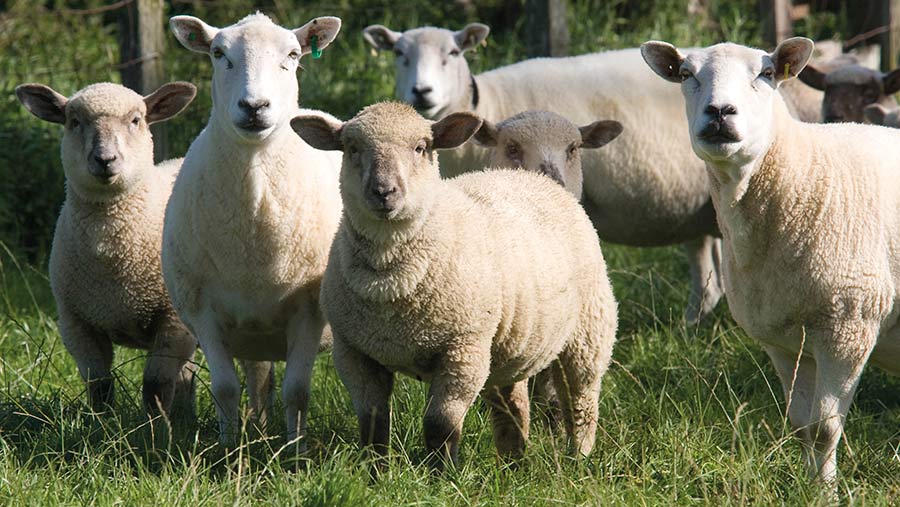3 ways to cut lamb worm risk at weaning
 © Tim Scrivener
© Tim Scrivener Sheep farmers trying to make the most of grass to counteract sky-high concentrate prices are advised to be vigilant for parasites in lambs post-weaning.
Grazing grass can put lambs at higher risk of ingesting worms that cause parasitic gastroenteritis (PGE), warns vet Charlotte Mouland at Synergy Farm Health.
“Grass growth has been pretty good this year, so that will aid weaning and growth rates early on,” she says. “But with concentrate prices being sky-high, people will be more reliant on forage.”
See also: Heaviest lambs at weaning are leanest, study shows
With weaning imminent on many farms, Mrs Mouland advises what can be done to reduce this risk, alongside other practices, to ensure lambs continue to grow well.
1. Reduce stress
Keep lambs out of sight and sound of ewes, so they cannot hear each other.
Wean lambs on to pasture they know for two to three days to reduce the stress of diet change. Once settled, they should be moved on to clean grazing.
Consider splitting lambs into short-, medium- and long-keep, to avoid having to handle them unnecessarily.
Some farmers are moving away from tailing and castrating. For these, weaning may be an appropriate time to split off any ram lambs, too, as these will grow faster and could impregnate ewe lambs.
2. Manage worm burdens
Move lambs onto “clean” grazing – new leys are best. Silage aftermath and fields that have been grazed by cattle are also low risks.
Sustainable Control of Parasites in Sheep (Scops) has information on how to complete a pasture-based parasite risk assessment (PDF).
Monitor growth rates regularly and carry out faecal egg counts (FECs) to flag any risks. Growth rates may tail off after weaning, but they should stabilise three to four weeks later. Afterwards, targets of 200g/day should be achievable.
If you do not know which anthelmintics work on your farm, ask your vet to carry out an FEC reduction test, whereby several anthelmintics are tested against a control.
Scops also has information on wormer resistance testing options.
It is good practice to administer the new-generation orange or purple wormers to lambs in August/September to kill any remaining worms and help slow the resistance to other groups of anthelmintics.
3. Check trace element status
Slow-growing or ill-thrift lambs could be a result of deficiencies in trace elements.
Cobalt is particularly important for growth, and dry summers can cause a lack of cobalt in grass.
Farmers can check trace element status by testing six to 10 animals in each affected group. Alternatively, liver samples of slaughtered lambs can be requested.
Speak to your vet about what oral drenches, boluses or injections are available. Buckets are not ideal because 20% of sheep will eat 80% of the lick.
When should lambs be weaned?
The goalposts will move every year. Studies suggest ewes and lambs start to compete for food at 10-12 weeks, so this should be considered the baseline.
However, three things should be considered:
- Ewe body condition score (BCS) The target for lowland ewes at weaning is 2.5 and for upland ewes is 2. If BCS is low, consider weaning early.
- Lamb growth rates Pre-weaning lambs should aim to achieve a minimum of 250g/day. Research suggests that lambs weighing less than 17kg at eight weeks never reach their full potential. Consider weaning slow-growing lambs early and putting them on to a high plane of nutrition.
- Grass availability If grass growth is slow, consider weaning earlier to avoid lambs having to compete with ewes for grass.
